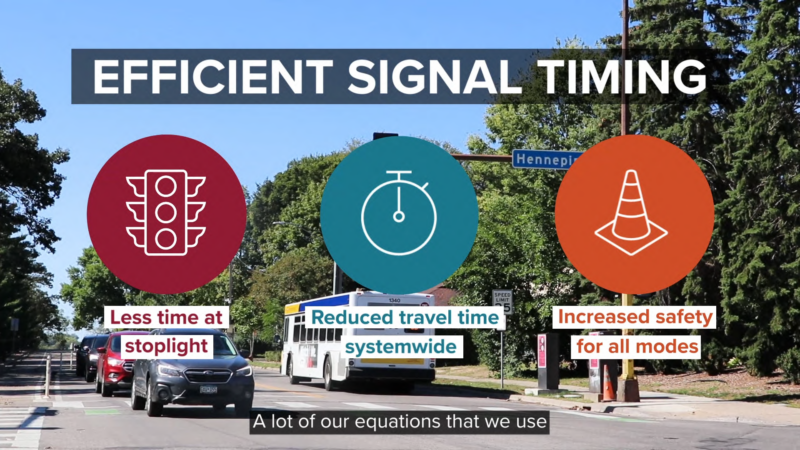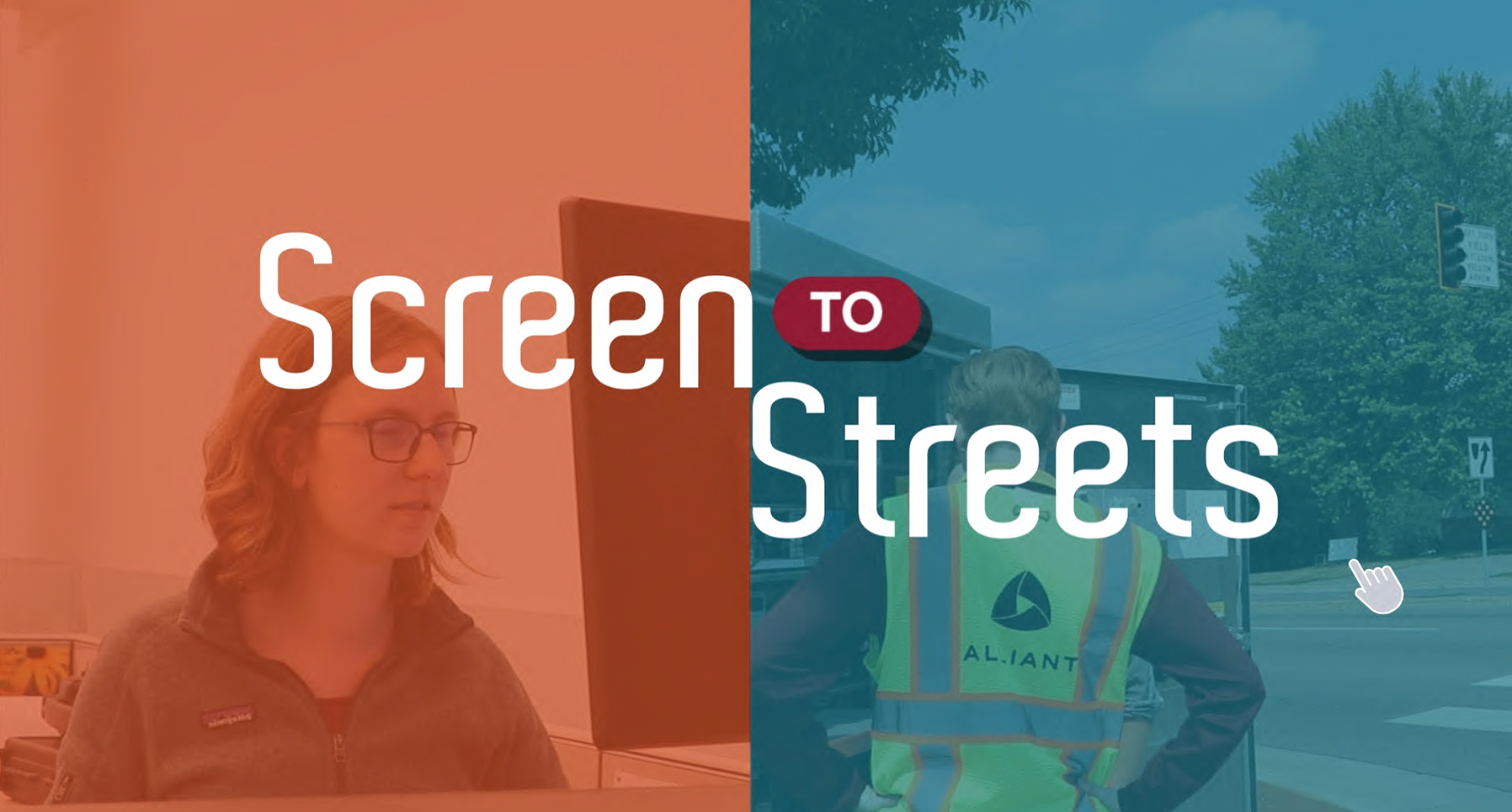In this Screen to Streets feature, we highlight traffic optimization through signal timing.
Used to increase the efficiency of a system of signalized intersections, if signal timing is well-executed, people can get through green lights more consistently. Less time is wasted at red lights, reducing travel time, and increasing safety throughout the whole system.
This is what our traffic engineering team at Alliant works on daily. When our traffic optimization team works on a new project, the first steps are looking at the current plan; identifying characteristics like issues, sites of accidents, and how transit fits in. We collect and count the data ourselves, meaning we can see the traffic deficiencies in the system firsthand. We can see what would be beneficial in the field and start setting up a new model.

Once we have designed our signal timing plan, we implement it by programming it into the controllers and testing it by driving down the corridors. This testing allows us to tweak issues and ensure consistency so that drivers experience green light, after green light, and the platoons of vehicles can keep moving.
The future of signal timing is more than just standard vehicles. It includes pedestrians, wheelchairs, transit, metro, bikes. At Alliant, we are adjusting our timing to be inclusive of all travelers, including longer crossing speeds near hospitals or nursing homes, and ADA accommodations. Everyone is using the road, so we must include everyone in our plans.
Learn more about traffic optimization in this interview with Cameron Valuch and Michael Odell, two of our Graduate Traffic Engineers.

